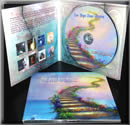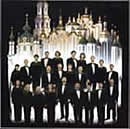Two Steps From Heaven

Classical Crossover

Sacred Choral Music
by Kiev Chamber Choir

Video:
Ukrainian Folk Music
Free Dog Clipart

Classical Crossover

Sacred Choral Music
by Kiev Chamber Choir

Video:
Ukrainian Folk Music
Free Dog Clipart
Russian Orthodox Church Sacred Choral Music on Amazon
ALL ABOUT
AVE MARIA LYRICS
Celine Dion: What Does She Sing?
MOBILE WEBSITE
 DOWNLOAD THIS SONG FOR FREE You won't find this song anywhere on the Internet. CHAPTER 2 : Getting Started Focus on Your Instrument Experiment Keep it Simple Get it Hot Target Your Frequency Gain Staging Limit Compression & EQ When Recording Avoid Phase Cancellation Focus on your instrument Even in the hands of the best player, an instrument with bad intonation won’t sound good on record. Maintaining and preparing an instrument is the first step to producing a quality recording. If you’re a vocalist, warm up and do your vocal exercises before hitting the mic. Drinking warm tea and honey to lubricate your vocal cords can help, as will wearing a scarf around your neck to keep your cords warm. Other common sense advice includes refraining from smoking and dairy products to keep your throat moist and phlegm free, and avoiding loud environments where you might speak loudly and tax your vocal cords. If you’re a guitar player, change your strings before going into the studio — especially if it’s an acoustic guitar. If you’re a bass player and you don’t change your strings once a month, you should consider changing those strings before you bring your bass into the studio. In both cases it will help the tone and the output, and you’ll stay in better tune. If you’re a drummer, change all your drum heads before recording. If the heads have been on for too long, they’re going to sound dull and they’re not going to stay in tune. Also, take time to tune the drums correctly — you may even consider tuning the drums differently for different songs. As a performer preparing to record, make sure you’re rehearsed and comfortable with the parts you’ll be recording, and make sure you enter the studio well rested and with a clear head. Check your cables Good cables can make a big difference, so make sure they all work and don’t rely on cheap product. Make sure all your input jacks and connections are working, and use a can of air spray to clean out any pots or faders that might have dust built up. Create a comfortable, but functional environment For artists who do not have a lot of experience in the studio, the transition from a rehearsal or performance environment to the studio can be very uncomfortable. “I had one session with a young woman,” recalls engineer, producer, and studio owner Jon Marc Weiss, “she was a vocalist, and her dad and her husband were there. We just couldn’t get a good take out of her. Her dad was totally on her, he was saying things like, ‘When you’re in front of your mirror in your bedroom, you do such a good take, and then we come into the studio and you can barely perform!’ Part of the problem was that they were putting way too much pressure on her. You’re not going to get a great performance out of anyone that way. “In addition to that, she was obviously in a comfortable environment and relaxed in her own room — so we brought the mirror, and her bedside table, and candles from her room, and we arranged them in the studio. Believe it or not, it worked! She just needed something familiar to make her feel at home. You’ve got to be careful as an engineer not to make it too clinical and sterile. You’ve got to keep the smiles going and keep the vibe going.” |
HOW TO MAKE HOME
|
DOWNLOAD THIS SONG FOR FREE
You won't find this song anywhere on the Internet.
HOW TO MAKE HOME RECORDING STUDIO